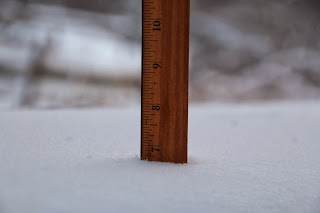For the second year in a row, my organization sponsored a Day of Service on the Martin Luther King, Jr. holiday. Like they did last year, the 15 volunteers who came out to work readied an area for reforestation in the spring by gathering large woody debris into a central location.
Woody debris is important in the forest ecosystem, but our degraded woodlands are under siege by invasive plants, and the branches, limbs and logs on the forest floor prevent the land stewardship staff from gaining access to new planting sites. New plantings need to be kept clear of non-native plants - especially vines.
 |
| The former owner of this land planted non-native pachysandra; it's visible in the background as a green "blanket" |
So, we've weighed our management options and have made the decision to remove the maintenance obstacles.
Besides, there's always more wood falling from the canopy as the mature trees shed limbs and topple over during storms. The forest floor won't remain "clear" for long.










